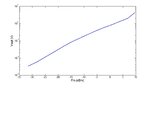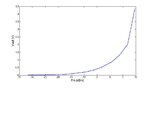raed_microwave
Advanced Member level 4

- Joined
- Jul 26, 2008
- Messages
- 107
- Helped
- 0
- Reputation
- 0
- Reaction score
- 0
- Trophy points
- 1,296
- Location
- Kassel, Germany, Germany
- Activity points
- 2,066
Hello
I used the power meter to measure the output IF power of low noise receiver and it was -3 dBm and later I used spectrum analyzer and the output IF power was -30 dBm with RBW of 1 MHz. The receiver has 1.2 GHz of IF bandwidh. Could you please tell me why this different in the measured power?
Regards
I used the power meter to measure the output IF power of low noise receiver and it was -3 dBm and later I used spectrum analyzer and the output IF power was -30 dBm with RBW of 1 MHz. The receiver has 1.2 GHz of IF bandwidh. Could you please tell me why this different in the measured power?
Regards




